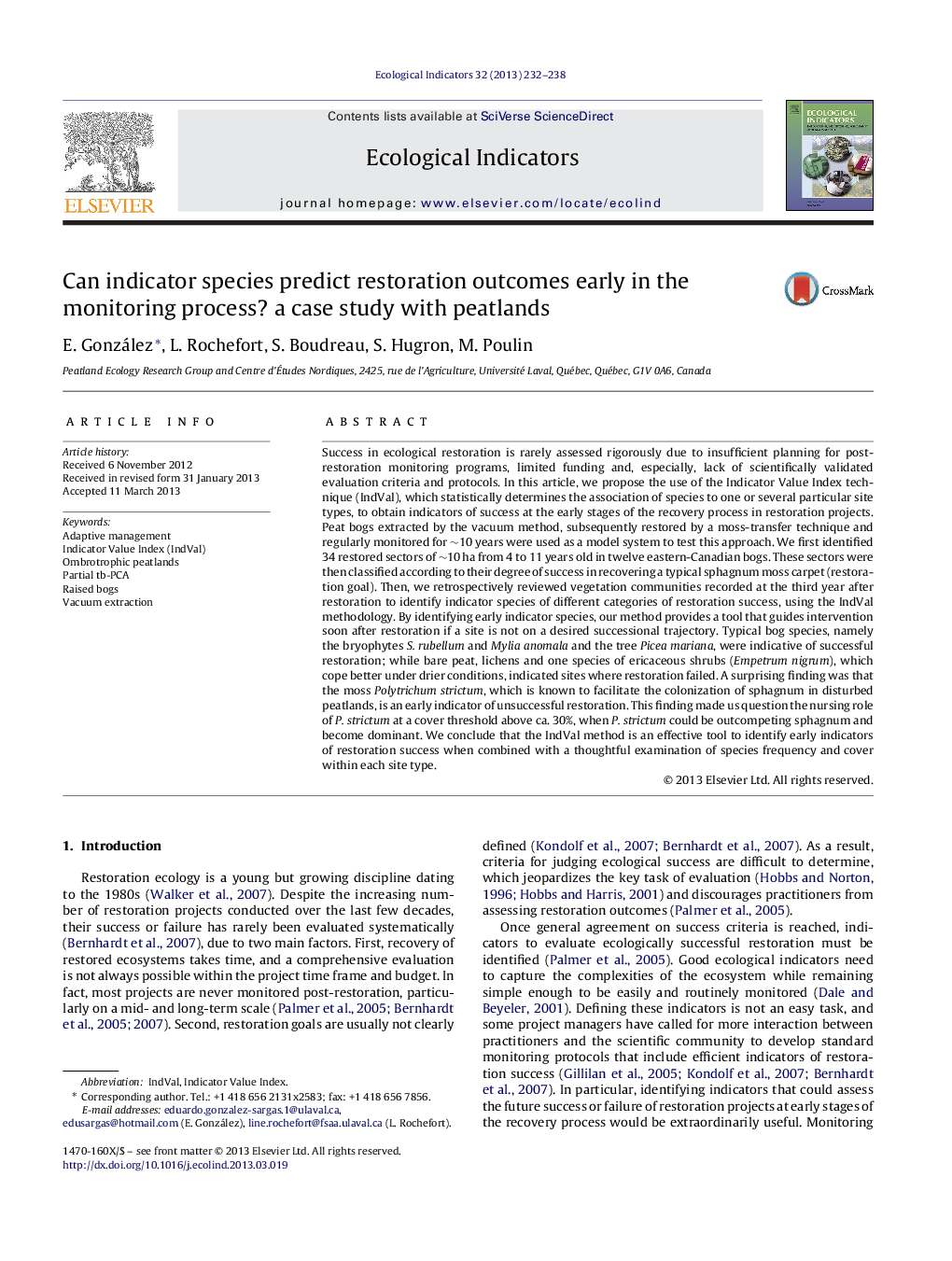| کد مقاله | کد نشریه | سال انتشار | مقاله انگلیسی | نسخه تمام متن |
|---|---|---|---|---|
| 4373404 | 1617168 | 2013 | 7 صفحه PDF | دانلود رایگان |

• Early monitoring can predict restoration outcomes through indicator species.
• The IndVal technique is useful to obtain indicators of restoration success.
• Post-restoration monitoring enables assessment of restoration outcomes retrospectively.
• Indicator species must be examined for frequency and cover thresholds.
• Cover of Polytrichum strictum above ~30% may counteract nursing effect on sphagnum.
Success in ecological restoration is rarely assessed rigorously due to insufficient planning for post-restoration monitoring programs, limited funding and, especially, lack of scientifically validated evaluation criteria and protocols. In this article, we propose the use of the Indicator Value Index technique (IndVal), which statistically determines the association of species to one or several particular site types, to obtain indicators of success at the early stages of the recovery process in restoration projects. Peat bogs extracted by the vacuum method, subsequently restored by a moss-transfer technique and regularly monitored for ~10 years were used as a model system to test this approach. We first identified 34 restored sectors of ~10 ha from 4 to 11 years old in twelve eastern-Canadian bogs. These sectors were then classified according to their degree of success in recovering a typical sphagnum moss carpet (restoration goal). Then, we retrospectively reviewed vegetation communities recorded at the third year after restoration to identify indicator species of different categories of restoration success, using the IndVal methodology. By identifying early indicator species, our method provides a tool that guides intervention soon after restoration if a site is not on a desired successional trajectory. Typical bog species, namely the bryophytes S. rubellum and Mylia anomala and the tree Picea mariana, were indicative of successful restoration; while bare peat, lichens and one species of ericaceous shrubs (Empetrum nigrum), which cope better under drier conditions, indicated sites where restoration failed. A surprising finding was that the moss Polytrichum strictum, which is known to facilitate the colonization of sphagnum in disturbed peatlands, is an early indicator of unsuccessful restoration. This finding made us question the nursing role of P. strictum at a cover threshold above ca. 30%, when P. strictum could be outcompeting sphagnum and become dominant. We conclude that the IndVal method is an effective tool to identify early indicators of restoration success when combined with a thoughtful examination of species frequency and cover within each site type.
Journal: Ecological Indicators - Volume 32, September 2013, Pages 232–238